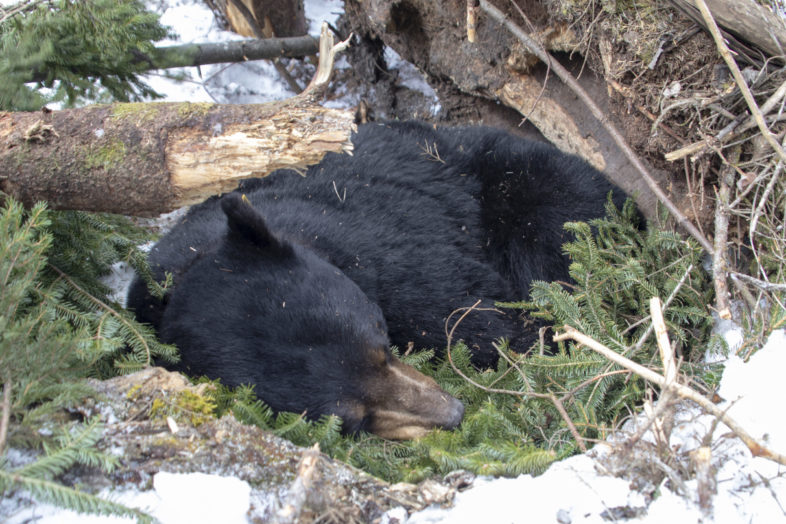
Stark rests on his bed of balsam fir in his den after being checked by biologists. Soon after this image was taken, they covered his den back over with the logs, sticks, and snow to let him rest for the remainder of winter. / © K.P. McFarland
The Vermont Fish & Wildlife Department is studying how the construction and operation of wind turbines in the Green Mountain National Forest affects local bears. This is the first wind energy development proposal within a national forest nationwide. The study will help inform future wind energy developments that are proposed in bear habitat. These sites draw bears from 20 to 30 miles away to feed on beechnuts each autumn when they are plentiful.
The VFWD wants to know if bears will change their use of these American Beech stands surrounding the Deerfield Wind Project area after the turbines placed and operating. The biologists have to understand how bears use the area before and after the wind farm is in operation.
In this month’s episode of Outdoor Radio, Kent McFarland and Sara Zahendra join the team of biologists from Vermont Fish and Wildlife and the Green Mountain National Forest to visit the winter den of one male bear, nicknamed Stark, so that they can replace the GPS collar that tracks his movements. By following bears with these collars each year, the biologists are collecting data about the behavior and movements around the wind project area.
Join the team and find out how much weight Stark has gained or lost this winter and where his journeys took him this year. Discover the risks that bears will take in order to prepare for a long winter in their den and how the biologists work with these amazing animals.
Listen to the show
Learn more
- Living with Vermont Black Bears
- Green Mountain National Forest Bear Study FAQs
- Discover more about black bears on the Vermont Fish and Wildlife website.
- Read the black bear management plan for Vermont.
More images
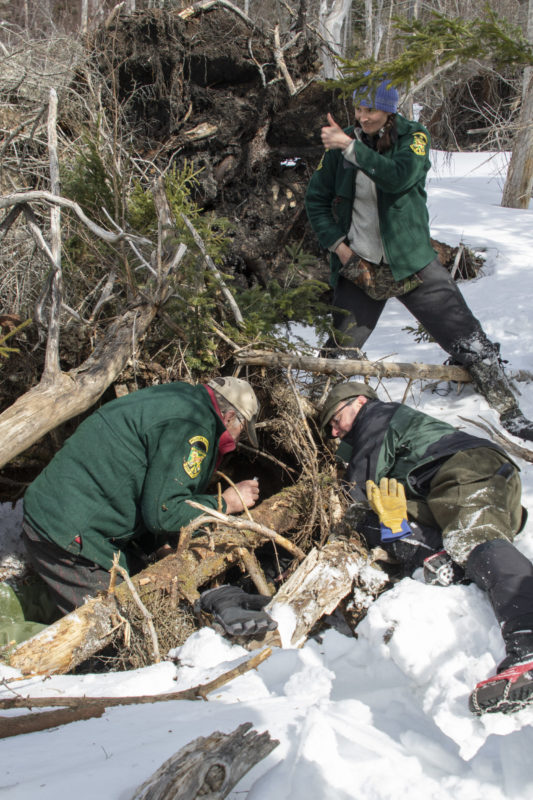
Stark has been successfully tranquilized and the biologists are best determining how to remove him from his den for examination.
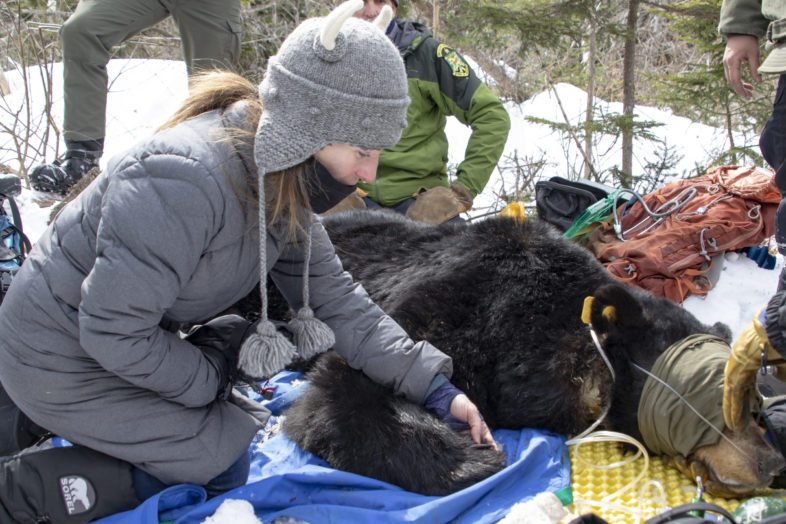
Sara compares her hand to the size of Stark’s as the biologists examine him. They keep his eyes covered and oxygen flowing to keep him comfortable while he is sedated.
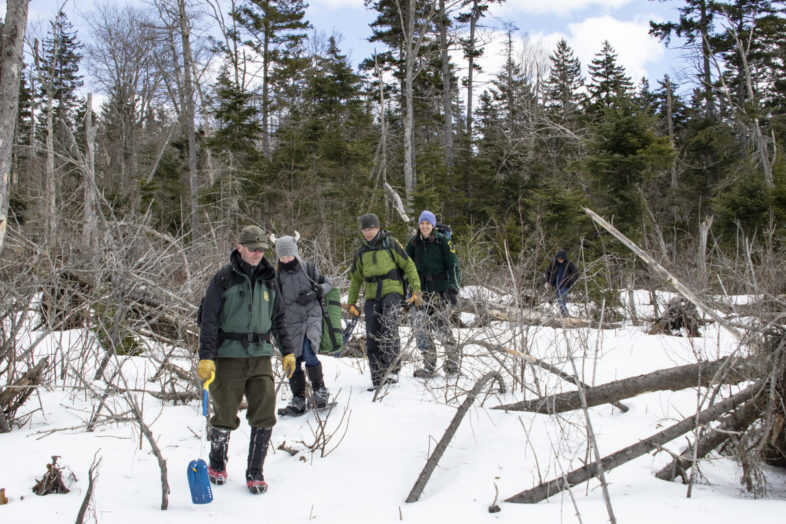
With there mission accomplished and Stark back in his den resting, the team treks out of the forest and back to the snowmobiles.
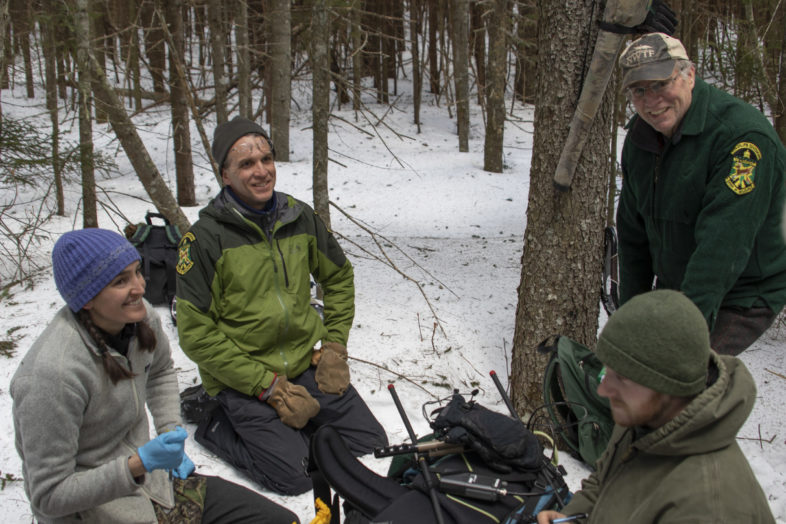
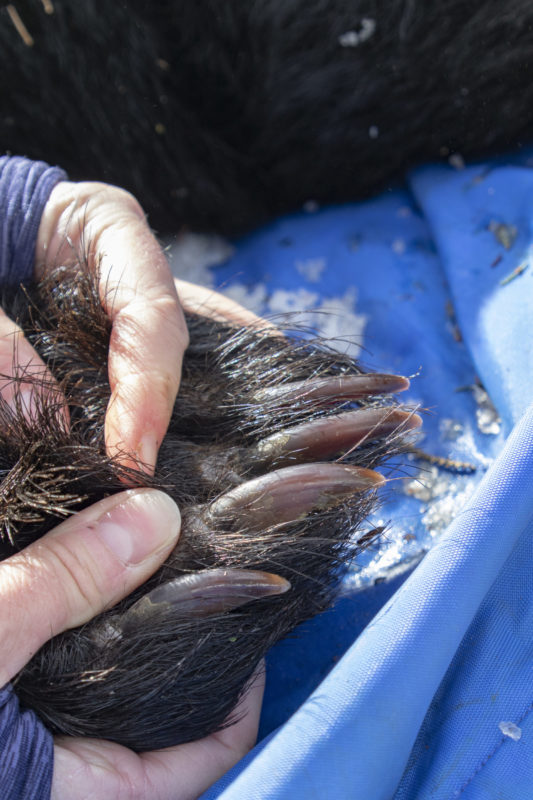
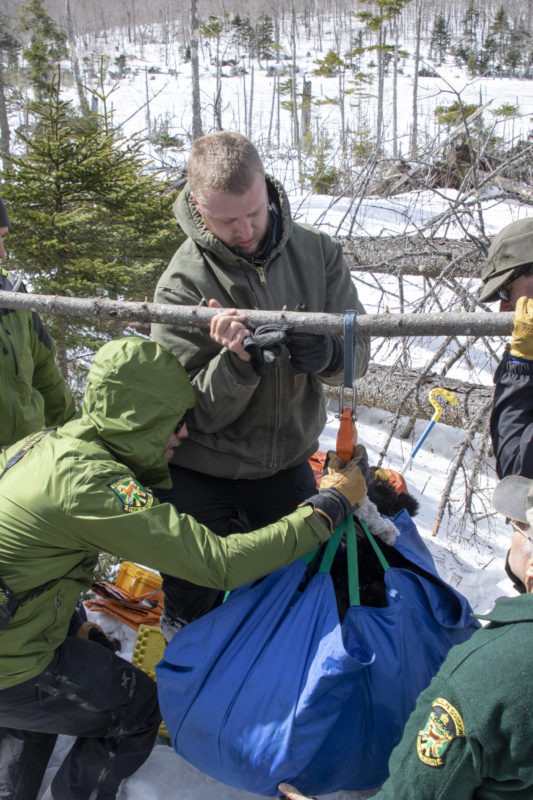

Is this cool or what? Sure looks like a lot of fun. Ted Jastrzembski